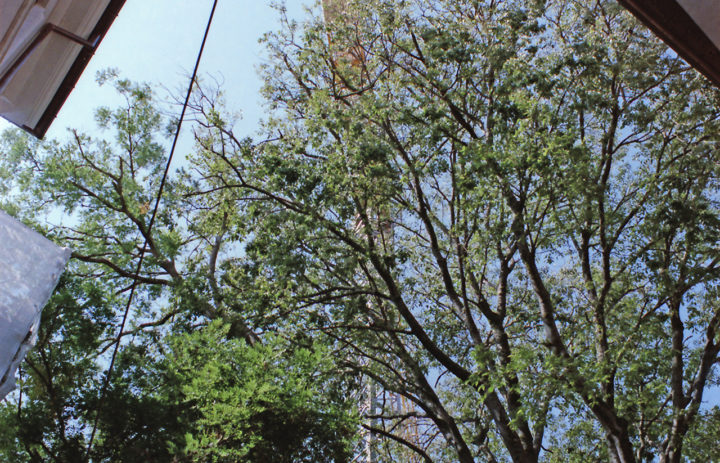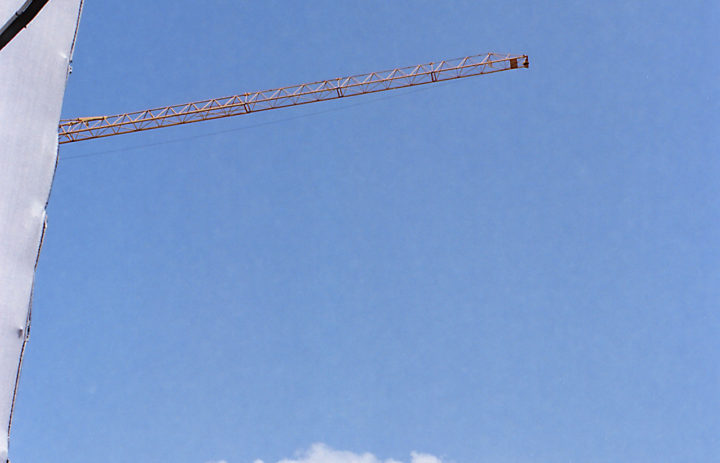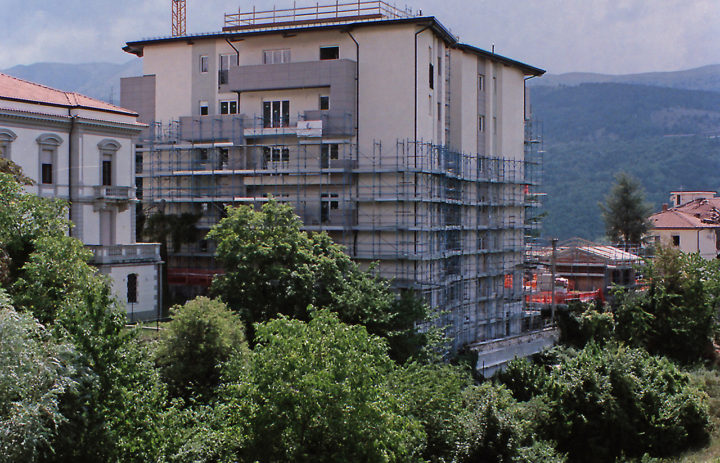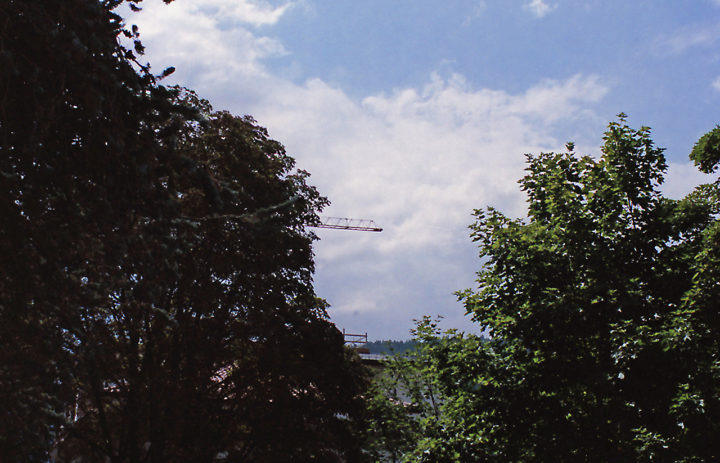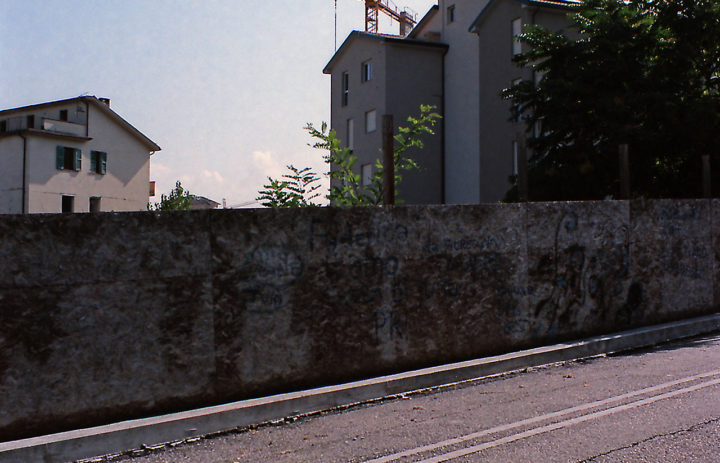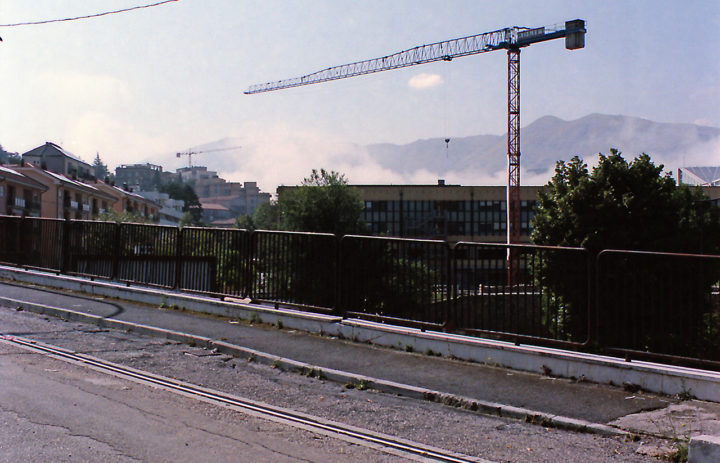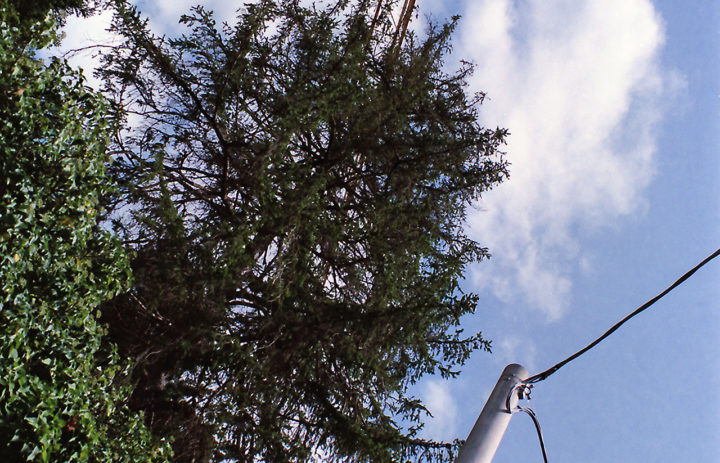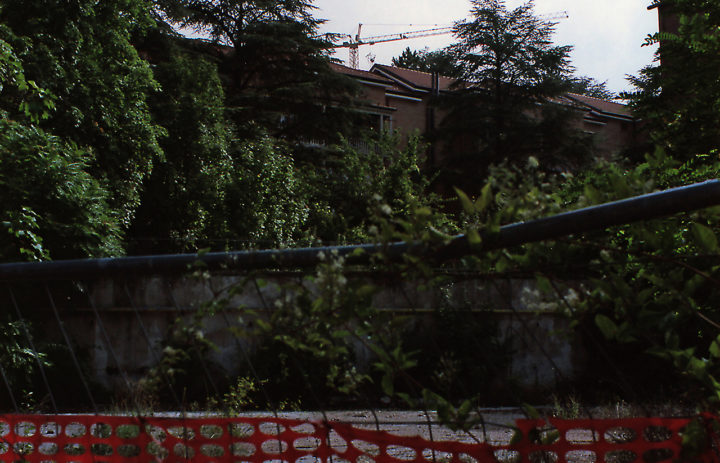THE FLOCK
The EURASIAN CRANE is a large bird, has a gray plumage in most of the body, although it has darker areas on the shoulders and tail.
The CRANE OF L’AQUILA is tall enough to overlook the entire city. If you look at it from a distance, it can frame it, transforming its skyline. It comes in various colors: red, white, yellow. At certain times of the year, at night, colored lights allow you to distinguish its outline, a guardian silhouette of the city.
The EURASIAN CRANE rests in the water resting the body on one leg.
The CRANE OF L’AQUILA rests by pausing on a single leg, well planted on the ground. It rests only on command, according to human will. Sometimes it remains motionless for a long time, so much so that by observing it you wonder if it has ever moved, and if it will ever move. At other times he is tireless and when he stops it is only to leave.
The EURASIAN CRANE is a migratory bird, it moves in flocks covering long distances.
The CRANE OF L’AQUILA arrived suddenly, it can be said with a large flock. Before there were some specimens, but in such a small number that nobody paid any attention to them, then they all came together and occupied the city. Each has chosen its own corner, some towards the center, some on the periphery. I think they felt good because after 11 years they still haven’t left, maybe they have changed their nature or maybe they were just looking for a place to stop.
Sometimes, if you look at them on a windy day, you see them dancing and you think that maybe they too can’t wait to migrate elsewhere.
Elena Bianchi
Temporariness
noun
1. Subsistence which requires a fallback solution, not definitive.
2. Indeterminacy associated with superficiality and lack of weighting.
It is 2013 when I met L’Aquila for the first time, four years have passed since the earthquake of April 6, 2009.
I come back by chance, I have a few days off during a business trip, the city is on the road and it seems to me a good opportunity to see it again. It is the end of August 2019 and ten years have passed since the shock that broke the city and its community.
I find a city still largely deserted. There are people around, not a few, but it seems to be passing through, tourists mostly. I expected to find a lot of noise, the construction sites that appeared everywhere, each with its crane to indicate its presence, like those pins that mark precise places on a map hanging on a wall. L’Aquila is the largest construction site in Europe. Instead I find a city that is all in all silent, the chatter of some workers in the alleys of the center, nothing that suggests the existence of a community that has returned to being present. Still too few people have returned to live in the historic center, to bring their activities back there. A temporary sensation remains persistent. Walking from Piazza Palazzo towards the main roads that surround the center, the atmosphere has still remained rather bleak.
Then there are the cranes. You look up and they are everywhere, they cut the sky in the alleys, they seem to be on guard. Present in mass to remember that normality is still far from coming. They have the brazen air of those who want to stay at least ten more years. “Goodbye”, they tell you. “See you soon. After all, ten years go by quickly in this completely wrong country of ours.”
The following text is taken from an article by Rossella Muroni, ecologist and deputy of Leu, published on April 5, 2019 in the TuttoGreen section of the on-line edition of La Stampa.
«You realize that you are arriving in L’Aquila not by its bell towers, or by the profile of the city that compares the whole horizon, but by the cranes that make it the largest construction site in Europe.
[…] After the earthquake in Friuli, in 1976, it was decided to rebuild the factories first, then the case and finally the churches and monuments […] In L’Aquila instead it was chosen to rebuild the churches first, many commercial activities are still in the temporary modules, as well as almost all of the schools, and thousands of citizens are still out of their suitcases […] and choices made at the time of the emergency have turned it upside down. Think of the 19 new cities built a crown around the crater, where, however, essential services are still lacking and in some cases they have been evacuated due to the risk of the collapse of the balconies.
[…] 4,200 families are still cared for and around 10 thousand people still resident in the new cities, which of the more than 700 commercial activities in the historic center until April 6, 2009 only 86 returned to central streets and squares. From which there are also about 8,000 off-site students, who prior to the earthquake carried out their center of choice […] to the pain and wounds inflicted by the shock of 3 and 32 of April 6, 2009, was also added on discomfort of having to live divided, of a forcefully fragmented community, without references.
[…] In addition to the delay, the reconstruction suffers from the lack of an overall vision and a lack of attention to urban quality. And civil society, always lively even in the toughest moments of the post-earthquake, struggles to rebuild the social fabric of the city […] So even if young people are returning to attend the center, this is not enough to restore the spirit and identity of the […] And L’Aquila is becoming a city of paradoxes in spite of itself: it is the largest construction site in Europe but also the building industry, which was built after the earthquake, is now in crisis and is losing workers [… ] In the countries of the crater and in the hamlets, the reconstruction of the schools must have been a sign of hope for the communities, but today these same symbols are likely to remain empty and closed due to depopulation.
